Schleicher, Kurt Ferdinand Friedrich Hermann von, born 07-04-1881 in Brandenburg an der Havel,  the son of a Prussian officer and noble, Hermann Friedrich Ferdinand von Schleicher (1853–1906) and a wealthy East Prussian shipowner’s daughter, Magdalena, born Heyn (1857–1939). Kurt had an older sister, Thusnelda Luise Amalie Magdalene (1879–1955), and a younger brother, Ludwig-Ferdinand Friedrich (1884–1923). On 28-07-1931, Schleicher married Elisabeth von Schleicher, daughter of the Prussian General Victor von Hennigs. She had previously been married to Schleicher’s cousin, Bogislaw von Schleicher, whom she had divorced on 04-05-1931. Kurt entered the German Army in 1900 as a second leutnant after graduating from a cadet training school.
the son of a Prussian officer and noble, Hermann Friedrich Ferdinand von Schleicher (1853–1906) and a wealthy East Prussian shipowner’s daughter, Magdalena, born Heyn (1857–1939). Kurt had an older sister, Thusnelda Luise Amalie Magdalene (1879–1955), and a younger brother, Ludwig-Ferdinand Friedrich (1884–1923). On 28-07-1931, Schleicher married Elisabeth von Schleicher, daughter of the Prussian General Victor von Hennigs. She had previously been married to Schleicher’s cousin, Bogislaw von Schleicher, whom she had divorced on 04-05-1931. Kurt entered the German Army in 1900 as a second leutnant after graduating from a cadet training school. 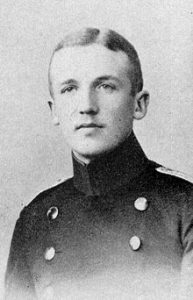 In his early years, Schleicher made two friendships which later were to play an important role in his life. As a cadet, Schleicher befriended Franz “Fränzchen” von Papen
In his early years, Schleicher made two friendships which later were to play an important role in his life. As a cadet, Schleicher befriended Franz “Fränzchen” von Papen
 the son of a Prussian officer and noble, Hermann Friedrich Ferdinand von Schleicher (1853–1906) and a wealthy East Prussian shipowner’s daughter, Magdalena, born Heyn (1857–1939). Kurt had an older sister, Thusnelda Luise Amalie Magdalene (1879–1955), and a younger brother, Ludwig-Ferdinand Friedrich (1884–1923). On 28-07-1931, Schleicher married Elisabeth von Schleicher, daughter of the Prussian General Victor von Hennigs. She had previously been married to Schleicher’s cousin, Bogislaw von Schleicher, whom she had divorced on 04-05-1931. Kurt entered the German Army in 1900 as a second leutnant after graduating from a cadet training school.
the son of a Prussian officer and noble, Hermann Friedrich Ferdinand von Schleicher (1853–1906) and a wealthy East Prussian shipowner’s daughter, Magdalena, born Heyn (1857–1939). Kurt had an older sister, Thusnelda Luise Amalie Magdalene (1879–1955), and a younger brother, Ludwig-Ferdinand Friedrich (1884–1923). On 28-07-1931, Schleicher married Elisabeth von Schleicher, daughter of the Prussian General Victor von Hennigs. She had previously been married to Schleicher’s cousin, Bogislaw von Schleicher, whom she had divorced on 04-05-1931. Kurt entered the German Army in 1900 as a second leutnant after graduating from a cadet training school.  In his early years, Schleicher made two friendships which later were to play an important role in his life. As a cadet, Schleicher befriended Franz “Fränzchen” von Papen
In his early years, Schleicher made two friendships which later were to play an important role in his life. As a cadet, Schleicher befriended Franz “Fränzchen” von Papen
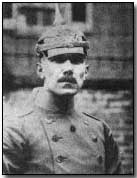

 and later on as an officer in the Third Guards Regiment
and later on as an officer in the Third Guards Regiment 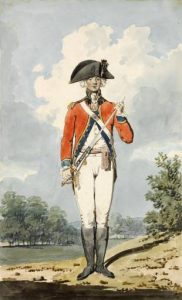 befriended Oskar von Hindenburg.
befriended Oskar von Hindenburg. 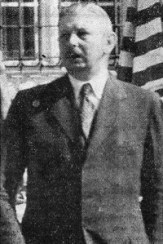
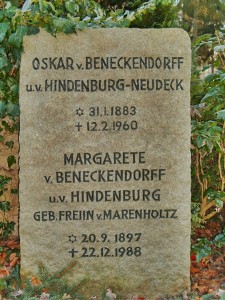 During World War I he served on the staff of Wilhelm Groener, he died age 71, on 03-05-1939, who became Schleicher’s patron.
During World War I he served on the staff of Wilhelm Groener, he died age 71, on 03-05-1939, who became Schleicher’s patron.
 After Schleicher’s army career, during the 1920s, he moved up steadily in the Reichswehr, the German army, becoming the primary liaison between the army and civilian government officials. He generally preferred to operate behind the scenes, planting stories in friendly newspapers and relying on a casual network of informers to find out what other government departments were planning. In this capacity, he headed up the Ministeramt or Office of the Ministerial Affairs. Although essentially a Prussian authoritarian in his views on order, discipline and the so-called decadence of the Weimar era, Schleicher also believed that the Army had a social function, that of an institution unifying the diverse elements in society. Interestingly, he was also opposed to policies such as Eastern Aid, Osthilfe, for the bankrupt East Elbian estates of his fellow Junkers. In economic policy, therefore, he was a relative moderate. Schleicher became a major figure behind the scenes in the presidential cabinet government of Heinrich Brüning
After Schleicher’s army career, during the 1920s, he moved up steadily in the Reichswehr, the German army, becoming the primary liaison between the army and civilian government officials. He generally preferred to operate behind the scenes, planting stories in friendly newspapers and relying on a casual network of informers to find out what other government departments were planning. In this capacity, he headed up the Ministeramt or Office of the Ministerial Affairs. Although essentially a Prussian authoritarian in his views on order, discipline and the so-called decadence of the Weimar era, Schleicher also believed that the Army had a social function, that of an institution unifying the diverse elements in society. Interestingly, he was also opposed to policies such as Eastern Aid, Osthilfe, for the bankrupt East Elbian estates of his fellow Junkers. In economic policy, therefore, he was a relative moderate. Schleicher became a major figure behind the scenes in the presidential cabinet government of Heinrich Brüning  between 1930 and 1932, serving as an aide to General Wilhelm Groener, the Minister of Defence. Eventually, Schleicher, who established a close relationship with President Paul von Hindenburg,
between 1930 and 1932, serving as an aide to General Wilhelm Groener, the Minister of Defence. Eventually, Schleicher, who established a close relationship with President Paul von Hindenburg, 
 came into conflict with Brüning and Groener, and his intrigues were largely responsible for their fall in May 1932. By coincidence, his name translated from the German is “Sneaker” or “Creeper.” The new Chancellor, Franz von Papen, hand-picked Schleicher as Minister of Defence. Schleicher was not as conservative as Papen, however, as evidenced in a 1932 radio address in which he bluntly announced his unambiguous opposition to either a military dictatorship or a puppet regime to be backed by military force. Eventually, Papen and Schleicher came into conflict, and when, following the November 1932 elections, the government could not maintain a working parliamentary majority, Papen was forced to resign, and Schleicher succeeded him as Chancellor of Germany. Schleicher hoped to attain a majority in the Reichstag by forming a so-called Querfront, meaning “cross-front,” whereby he would unify Germany’s fractious special interests around a non-parliamentary, authoritarian but participatory regime. Thus, he reached out to the Social Democratic labour unions, the Christian labour unions and the left-wing branch of the Nazi Party, led by Gregor Strasser,
came into conflict with Brüning and Groener, and his intrigues were largely responsible for their fall in May 1932. By coincidence, his name translated from the German is “Sneaker” or “Creeper.” The new Chancellor, Franz von Papen, hand-picked Schleicher as Minister of Defence. Schleicher was not as conservative as Papen, however, as evidenced in a 1932 radio address in which he bluntly announced his unambiguous opposition to either a military dictatorship or a puppet regime to be backed by military force. Eventually, Papen and Schleicher came into conflict, and when, following the November 1932 elections, the government could not maintain a working parliamentary majority, Papen was forced to resign, and Schleicher succeeded him as Chancellor of Germany. Schleicher hoped to attain a majority in the Reichstag by forming a so-called Querfront, meaning “cross-front,” whereby he would unify Germany’s fractious special interests around a non-parliamentary, authoritarian but participatory regime. Thus, he reached out to the Social Democratic labour unions, the Christian labour unions and the left-wing branch of the Nazi Party, led by Gregor Strasser,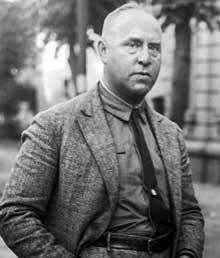
 Strasser, however, was already losing the internal power struggle with Adolf Hitler (did you know). Strasser was also murdered, age 42, on 30-06-1934. Although Schleicher made some initial progress, he was rebuffed by both sides. The ousted Papen now had Hindenburg’s ear, because the latter was beginning to have misgivings about Schleicher’s “cryptoparliamentarianism” and willingness to work with the SPD, which the old President despised. Papen was urging the aged President to appoint Hitler as Chancellor in a coalition with the Nationalist DNVP, or Deutschenationale Volkspartei
Strasser, however, was already losing the internal power struggle with Adolf Hitler (did you know). Strasser was also murdered, age 42, on 30-06-1934. Although Schleicher made some initial progress, he was rebuffed by both sides. The ousted Papen now had Hindenburg’s ear, because the latter was beginning to have misgivings about Schleicher’s “cryptoparliamentarianism” and willingness to work with the SPD, which the old President despised. Papen was urging the aged President to appoint Hitler as Chancellor in a coalition with the Nationalist DNVP, or Deutschenationale Volkspartei  , German National People’s Party, who, together with Papen, would supposedly be in a position to moderate Nazi excesses. Unbeknownst to Schleicher, Papen was holding secret meetings with both Hitler and Hindenburg, who then refused Schleicher’s request for emergency powers and another dissolution of the Reichstag.
, German National People’s Party, who, together with Papen, would supposedly be in a position to moderate Nazi excesses. Unbeknownst to Schleicher, Papen was holding secret meetings with both Hitler and Hindenburg, who then refused Schleicher’s request for emergency powers and another dissolution of the Reichstag.  The President dismissed Schleicher, calling Hitler into power on 30-01-1933. In the following months, the Nazis issued the Reichstag Fire Decree
The President dismissed Schleicher, calling Hitler into power on 30-01-1933. In the following months, the Nazis issued the Reichstag Fire Decree  and the Enabling Act, transforming Germany into a totalitarian dictatorship. In his last months, Schleicher was instrumental in attempts to negotiate the return of the House of Hohenzollern. Fearing this would lead to his overthrow and the collapse of his regime, Hitler had considered Schleicher a target for assassination for some time.
and the Enabling Act, transforming Germany into a totalitarian dictatorship. In his last months, Schleicher was instrumental in attempts to negotiate the return of the House of Hohenzollern. Fearing this would lead to his overthrow and the collapse of his regime, Hitler had considered Schleicher a target for assassination for some time.Death and burial ground of Schleicher, Kurt Ferdinand Friedrich Hermann von.
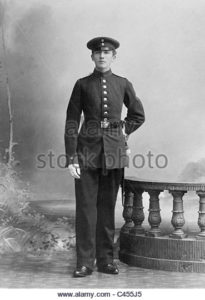


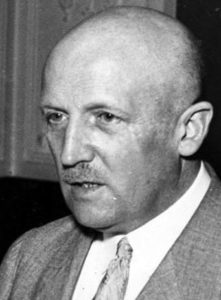
When, from 30 June to 2 July 1934, the Night of the Long Knives occurred, Schleicher was one of the chief victims. At about 10: 30 am on 30-06-1934, a car parked on the street outside of Schleicher’s house, of which emerged a group of men wearing trench coats and fedoras who proceeded to walk up to Schleicher’s house in the villa in Neu Babelsberg-Germany. 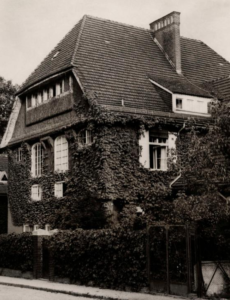 While Schleicher was talking on the phone, he heard somebody knocking at his door, and placed the phone down. Schleicher’s last words, heard by his friend on the phone, were “Jawohl, ich bin General von Schleicher” (“Yes, I am General von Schleicher”), followed up by two shots. Upon hearing the shots, his wife Elisabeth von Schleicher ran forward into the front lobby, where she was gunned down as well. (She was one of only three female victims of the Night of the Long Knives). SS Sturmbannführer Johannes Schmidt,
While Schleicher was talking on the phone, he heard somebody knocking at his door, and placed the phone down. Schleicher’s last words, heard by his friend on the phone, were “Jawohl, ich bin General von Schleicher” (“Yes, I am General von Schleicher”), followed up by two shots. Upon hearing the shots, his wife Elisabeth von Schleicher ran forward into the front lobby, where she was gunned down as well. (She was one of only three female victims of the Night of the Long Knives). SS Sturmbannführer Johannes Schmidt, 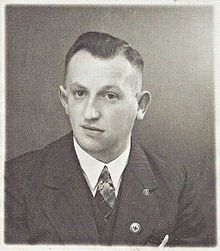 who is regarded as the man who carried out the killing of Schleicher. According to Orths and Orb’s presentation, five of the following men of the SD section East and SD section III came into question for Johann Schmidt’s accompaniment in the murder: SS Obertruppenführer Kurt Brunow, SS Obersturmführer Werner Theodor Göttsch, who died age 70 on † 2. Mai 1983, SS Untersturmführer Kurt Graaf, who died age 63 on 2. September 1972, SS Untersturmführer Richard Gutkaes, who died age 37, on 27. Januar 1936, SS Oberscharführer Alfred Naujocks
who is regarded as the man who carried out the killing of Schleicher. According to Orths and Orb’s presentation, five of the following men of the SD section East and SD section III came into question for Johann Schmidt’s accompaniment in the murder: SS Obertruppenführer Kurt Brunow, SS Obersturmführer Werner Theodor Göttsch, who died age 70 on † 2. Mai 1983, SS Untersturmführer Kurt Graaf, who died age 63 on 2. September 1972, SS Untersturmführer Richard Gutkaes, who died age 37, on 27. Januar 1936, SS Oberscharführer Alfred Naujocks 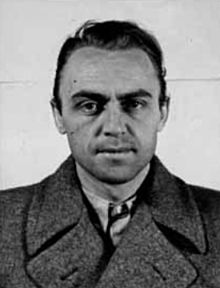 , who died age 54 on 04-04-1966 in Hamburg, SS man Josef Pospischil (SS member)
, who died age 54 on 04-04-1966 in Hamburg, SS man Josef Pospischil (SS member)  , who was executed, age 48 on 14-02-1948 in Rastatt. SS Obersturmführer Richard Reinhard Ferdinand Pruchtnow,
, who was executed, age 48 on 14-02-1948 in Rastatt. SS Obersturmführer Richard Reinhard Ferdinand Pruchtnow,  Pruchnows wedding party on 29-01-1937. In the picture (right to left): Lina Heydrich,
Pruchnows wedding party on 29-01-1937. In the picture (right to left): Lina Heydrich,  SS Obergruppenführer Karl Wolf,
SS Obergruppenführer Karl Wolf,  Heinrich Himmler,
Heinrich Himmler,  Miss Henrichsen, Pruchtnow and his bride and Reinhard Heydrich,
Miss Henrichsen, Pruchtnow and his bride and Reinhard Heydrich,  also involved the following members of the SD section III SS Obersturmführer Willy Falkenberg, who died, age 68 on 12-08-1968 in Düsseldorf, SS Untersturmführer Heinz Schildt, V -Mann Ernst Werner and SS-Obersturmbannführer Walter Sohst, who died age 66 on 14-11-1964 in Kiel.
also involved the following members of the SD section III SS Obersturmführer Willy Falkenberg, who died, age 68 on 12-08-1968 in Düsseldorf, SS Untersturmführer Heinz Schildt, V -Mann Ernst Werner and SS-Obersturmbannführer Walter Sohst, who died age 66 on 14-11-1964 in Kiel.
 While Schleicher was talking on the phone, he heard somebody knocking at his door, and placed the phone down. Schleicher’s last words, heard by his friend on the phone, were “Jawohl, ich bin General von Schleicher” (“Yes, I am General von Schleicher”), followed up by two shots. Upon hearing the shots, his wife Elisabeth von Schleicher ran forward into the front lobby, where she was gunned down as well. (She was one of only three female victims of the Night of the Long Knives). SS Sturmbannführer Johannes Schmidt,
While Schleicher was talking on the phone, he heard somebody knocking at his door, and placed the phone down. Schleicher’s last words, heard by his friend on the phone, were “Jawohl, ich bin General von Schleicher” (“Yes, I am General von Schleicher”), followed up by two shots. Upon hearing the shots, his wife Elisabeth von Schleicher ran forward into the front lobby, where she was gunned down as well. (She was one of only three female victims of the Night of the Long Knives). SS Sturmbannführer Johannes Schmidt,  who is regarded as the man who carried out the killing of Schleicher. According to Orths and Orb’s presentation, five of the following men of the SD section East and SD section III came into question for Johann Schmidt’s accompaniment in the murder: SS Obertruppenführer Kurt Brunow, SS Obersturmführer Werner Theodor Göttsch, who died age 70 on † 2. Mai 1983, SS Untersturmführer Kurt Graaf, who died age 63 on 2. September 1972, SS Untersturmführer Richard Gutkaes, who died age 37, on 27. Januar 1936, SS Oberscharführer Alfred Naujocks
who is regarded as the man who carried out the killing of Schleicher. According to Orths and Orb’s presentation, five of the following men of the SD section East and SD section III came into question for Johann Schmidt’s accompaniment in the murder: SS Obertruppenführer Kurt Brunow, SS Obersturmführer Werner Theodor Göttsch, who died age 70 on † 2. Mai 1983, SS Untersturmführer Kurt Graaf, who died age 63 on 2. September 1972, SS Untersturmführer Richard Gutkaes, who died age 37, on 27. Januar 1936, SS Oberscharführer Alfred Naujocks  , who died age 54 on 04-04-1966 in Hamburg, SS man Josef Pospischil (SS member)
, who died age 54 on 04-04-1966 in Hamburg, SS man Josef Pospischil (SS member)  , who was executed, age 48 on 14-02-1948 in Rastatt. SS Obersturmführer Richard Reinhard Ferdinand Pruchtnow,
, who was executed, age 48 on 14-02-1948 in Rastatt. SS Obersturmführer Richard Reinhard Ferdinand Pruchtnow,  Pruchnows wedding party on 29-01-1937. In the picture (right to left): Lina Heydrich,
Pruchnows wedding party on 29-01-1937. In the picture (right to left): Lina Heydrich,  SS Obergruppenführer Karl Wolf,
SS Obergruppenführer Karl Wolf,  Heinrich Himmler,
Heinrich Himmler,  Miss Henrichsen, Pruchtnow and his bride and Reinhard Heydrich,
Miss Henrichsen, Pruchtnow and his bride and Reinhard Heydrich,  also involved the following members of the SD section III SS Obersturmführer Willy Falkenberg, who died, age 68 on 12-08-1968 in Düsseldorf, SS Untersturmführer Heinz Schildt, V -Mann Ernst Werner and SS-Obersturmbannführer Walter Sohst, who died age 66 on 14-11-1964 in Kiel.
also involved the following members of the SD section III SS Obersturmführer Willy Falkenberg, who died, age 68 on 12-08-1968 in Düsseldorf, SS Untersturmführer Heinz Schildt, V -Mann Ernst Werner and SS-Obersturmbannführer Walter Sohst, who died age 66 on 14-11-1964 in Kiel.


Schleicher’s stepdaughter Lonny Elisabeth Marie Paula von Schleicher (born 04-11-1919 in Berlin-Lichterfelde-West; Todesrune. died 13-11-2014 in Munich) 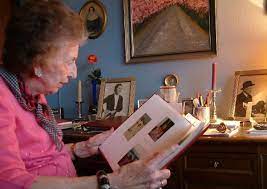
 was the one who found the bodies. 14-year-old Lonny moved with her aunt from Neubabelsberg to Potsdam and attended a private college. During World War II she served in the Reichsheeresarchiv in Potsdam, while she attended a course in typewriter and shorthand, which she completed in 1943 and then served in the Wehrmacht post in Paris. After the invasion of Normandy, she returned to Berlin with the help of the Red Cross, then, as the Russians came closer and closer, to Denmark, where she looked after the wounded soldiers from East Prussia until the Wehrmacht surrendered and afterwards. After the war she worked as a nurse, then as an office assistant, a secretary at Ullstein-Verlag, a department head in an advertising agency and finally an administrative employee at the BND.
was the one who found the bodies. 14-year-old Lonny moved with her aunt from Neubabelsberg to Potsdam and attended a private college. During World War II she served in the Reichsheeresarchiv in Potsdam, while she attended a course in typewriter and shorthand, which she completed in 1943 and then served in the Wehrmacht post in Paris. After the invasion of Normandy, she returned to Berlin with the help of the Red Cross, then, as the Russians came closer and closer, to Denmark, where she looked after the wounded soldiers from East Prussia until the Wehrmacht surrendered and afterwards. After the war she worked as a nurse, then as an office assistant, a secretary at Ullstein-Verlag, a department head in an advertising agency and finally an administrative employee at the BND.

 was the one who found the bodies. 14-year-old Lonny moved with her aunt from Neubabelsberg to Potsdam and attended a private college. During World War II she served in the Reichsheeresarchiv in Potsdam, while she attended a course in typewriter and shorthand, which she completed in 1943 and then served in the Wehrmacht post in Paris. After the invasion of Normandy, she returned to Berlin with the help of the Red Cross, then, as the Russians came closer and closer, to Denmark, where she looked after the wounded soldiers from East Prussia until the Wehrmacht surrendered and afterwards. After the war she worked as a nurse, then as an office assistant, a secretary at Ullstein-Verlag, a department head in an advertising agency and finally an administrative employee at the BND.
was the one who found the bodies. 14-year-old Lonny moved with her aunt from Neubabelsberg to Potsdam and attended a private college. During World War II she served in the Reichsheeresarchiv in Potsdam, while she attended a course in typewriter and shorthand, which she completed in 1943 and then served in the Wehrmacht post in Paris. After the invasion of Normandy, she returned to Berlin with the help of the Red Cross, then, as the Russians came closer and closer, to Denmark, where she looked after the wounded soldiers from East Prussia until the Wehrmacht surrendered and afterwards. After the war she worked as a nurse, then as an office assistant, a secretary at Ullstein-Verlag, a department head in an advertising agency and finally an administrative employee at the BND.Some historians suggest that Schleicher’s stepdaughter was later killed after she tried to kill Hitler herself, although this was never confirmed. As far as the Army was concerned, the matter of Schleicher’s murder was settled. However, the Nazis continued in private to accuse Schleicher of high treason. Hermann Goering told Jan Szembek 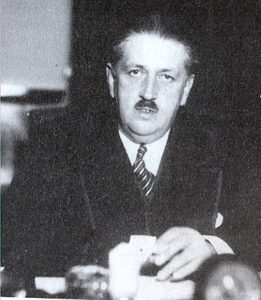 a Polish diplomat, one of the most influential in the final years of the Second Polish Republic, during a visit to Warsaw in January 1935 that Schleicher had urged Hitler in January 1933 to reach an understanding with France and the Soviet Union, and partition Poland with the latter, and that was why Hitler had Schleicher killed. Szembek died on July 09-07-1945, age 63, in Estoril near Lisbon. Hitler told the Polish Ambassador Józef Lipski
a Polish diplomat, one of the most influential in the final years of the Second Polish Republic, during a visit to Warsaw in January 1935 that Schleicher had urged Hitler in January 1933 to reach an understanding with France and the Soviet Union, and partition Poland with the latter, and that was why Hitler had Schleicher killed. Szembek died on July 09-07-1945, age 63, in Estoril near Lisbon. Hitler told the Polish Ambassador Józef Lipski  on 22-03-1935 that Schleicher was “rightfully murdered, if only because he had sought to maintain the Rapallo Treaty”. Lipski moved to the USA and represented the Polish Government in Exile and died 01-11-1958, age 64.
on 22-03-1935 that Schleicher was “rightfully murdered, if only because he had sought to maintain the Rapallo Treaty”. Lipski moved to the USA and represented the Polish Government in Exile and died 01-11-1958, age 64.
 a Polish diplomat, one of the most influential in the final years of the Second Polish Republic, during a visit to Warsaw in January 1935 that Schleicher had urged Hitler in January 1933 to reach an understanding with France and the Soviet Union, and partition Poland with the latter, and that was why Hitler had Schleicher killed. Szembek died on July 09-07-1945, age 63, in Estoril near Lisbon. Hitler told the Polish Ambassador Józef Lipski
a Polish diplomat, one of the most influential in the final years of the Second Polish Republic, during a visit to Warsaw in January 1935 that Schleicher had urged Hitler in January 1933 to reach an understanding with France and the Soviet Union, and partition Poland with the latter, and that was why Hitler had Schleicher killed. Szembek died on July 09-07-1945, age 63, in Estoril near Lisbon. Hitler told the Polish Ambassador Józef Lipski  on 22-03-1935 that Schleicher was “rightfully murdered, if only because he had sought to maintain the Rapallo Treaty”. Lipski moved to the USA and represented the Polish Government in Exile and died 01-11-1958, age 64.
on 22-03-1935 that Schleicher was “rightfully murdered, if only because he had sought to maintain the Rapallo Treaty”. Lipski moved to the USA and represented the Polish Government in Exile and died 01-11-1958, age 64.In his speech to the Reichstag on July 13 justifying his actions, Hitler denounced Schleicher for conspiring with SA leader, Ernst Julius Röhm
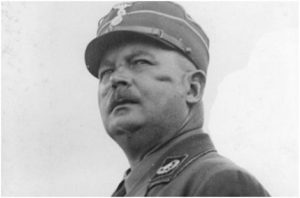
 to overthrow the government, another lie was necessary.
to overthrow the government, another lie was necessary.Kurt von Schleicher, age 51, is buried with his wife Elisabeth, born von Hennigs, age 40,  on the Parkfriedhof, Lichterfelde in Berlin. At his funeral, Schleicher’s friend von Hammerstein was offended when the SS refused to allow him to attend the service and confiscated wreaths that the mourners had brought. General Kurt von Hammerstein-Equord
on the Parkfriedhof, Lichterfelde in Berlin. At his funeral, Schleicher’s friend von Hammerstein was offended when the SS refused to allow him to attend the service and confiscated wreaths that the mourners had brought. General Kurt von Hammerstein-Equord 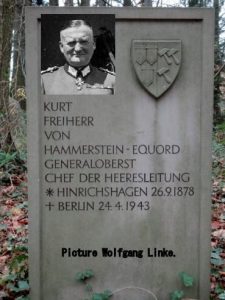 and Generalfeldmarschall August von Mackensen
and Generalfeldmarschall August von Mackensen 
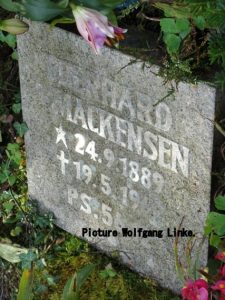 began trying to have Schleicher rehabilitated. The army somehow obtained Schleicher’s file from the SS. Mackensen led a meeting of 400 officers that drank a toast to Schleicher, and entered his and General Ferdinand von Bredow’s Bredow, along with Schleicher, was murdered in Berlin-Lichterfelde by SS men from the Leibstandarte Adolf Hitler
began trying to have Schleicher rehabilitated. The army somehow obtained Schleicher’s file from the SS. Mackensen led a meeting of 400 officers that drank a toast to Schleicher, and entered his and General Ferdinand von Bredow’s Bredow, along with Schleicher, was murdered in Berlin-Lichterfelde by SS men from the Leibstandarte Adolf Hitler  in the Night of the Long Knives. Generakl von Bredow was drinking tea on the afternoon of 30 June 1934 at the Hotel Adlon in Berlin, when he heard about the murder of Schleicher that morning on the radio. A foreign military attaché present offered Bredow the safety of his embassy, but Bredow refused, saying “I am going home. They have killed my Chief. What is there left for me?” Later the same day, Bredow, age 50, answered his door at his house and was shot in the face at point-blank range. As Wheeler-Bennet later noted, “…in a moment he had joined his Chief” names into the regimental honor roll.
in the Night of the Long Knives. Generakl von Bredow was drinking tea on the afternoon of 30 June 1934 at the Hotel Adlon in Berlin, when he heard about the murder of Schleicher that morning on the radio. A foreign military attaché present offered Bredow the safety of his embassy, but Bredow refused, saying “I am going home. They have killed my Chief. What is there left for me?” Later the same day, Bredow, age 50, answered his door at his house and was shot in the face at point-blank range. As Wheeler-Bennet later noted, “…in a moment he had joined his Chief” names into the regimental honor roll.
 on the Parkfriedhof, Lichterfelde in Berlin. At his funeral, Schleicher’s friend von Hammerstein was offended when the SS refused to allow him to attend the service and confiscated wreaths that the mourners had brought. General Kurt von Hammerstein-Equord
on the Parkfriedhof, Lichterfelde in Berlin. At his funeral, Schleicher’s friend von Hammerstein was offended when the SS refused to allow him to attend the service and confiscated wreaths that the mourners had brought. General Kurt von Hammerstein-Equord  and Generalfeldmarschall August von Mackensen
and Generalfeldmarschall August von Mackensen 
 began trying to have Schleicher rehabilitated. The army somehow obtained Schleicher’s file from the SS. Mackensen led a meeting of 400 officers that drank a toast to Schleicher, and entered his and General Ferdinand von Bredow’s Bredow, along with Schleicher, was murdered in Berlin-Lichterfelde by SS men from the Leibstandarte Adolf Hitler
began trying to have Schleicher rehabilitated. The army somehow obtained Schleicher’s file from the SS. Mackensen led a meeting of 400 officers that drank a toast to Schleicher, and entered his and General Ferdinand von Bredow’s Bredow, along with Schleicher, was murdered in Berlin-Lichterfelde by SS men from the Leibstandarte Adolf Hitler  in the Night of the Long Knives. Generakl von Bredow was drinking tea on the afternoon of 30 June 1934 at the Hotel Adlon in Berlin, when he heard about the murder of Schleicher that morning on the radio. A foreign military attaché present offered Bredow the safety of his embassy, but Bredow refused, saying “I am going home. They have killed my Chief. What is there left for me?” Later the same day, Bredow, age 50, answered his door at his house and was shot in the face at point-blank range. As Wheeler-Bennet later noted, “…in a moment he had joined his Chief” names into the regimental honor roll.
in the Night of the Long Knives. Generakl von Bredow was drinking tea on the afternoon of 30 June 1934 at the Hotel Adlon in Berlin, when he heard about the murder of Schleicher that morning on the radio. A foreign military attaché present offered Bredow the safety of his embassy, but Bredow refused, saying “I am going home. They have killed my Chief. What is there left for me?” Later the same day, Bredow, age 50, answered his door at his house and was shot in the face at point-blank range. As Wheeler-Bennet later noted, “…in a moment he had joined his Chief” names into the regimental honor roll.Upon hearing of the assassination, former German Emperor Wilhelm II, 
 living in exile in the Netherlands, commented, “We have ceased to live under the rule of law and everyone must be prepared for the possibility that the Nazis will push their way in and put them up against the wall!”
living in exile in the Netherlands, commented, “We have ceased to live under the rule of law and everyone must be prepared for the possibility that the Nazis will push their way in and put them up against the wall!”

 living in exile in the Netherlands, commented, “We have ceased to live under the rule of law and everyone must be prepared for the possibility that the Nazis will push their way in and put them up against the wall!”
living in exile in the Netherlands, commented, “We have ceased to live under the rule of law and everyone must be prepared for the possibility that the Nazis will push their way in and put them up against the wall!”







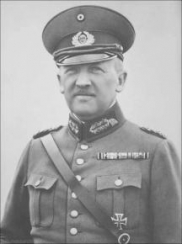



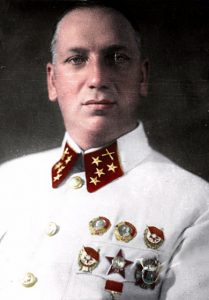
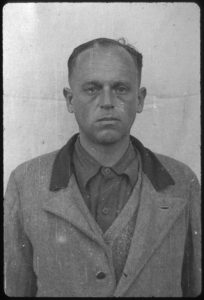
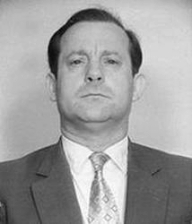



Leave a Reply